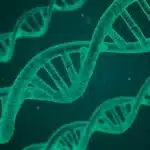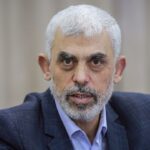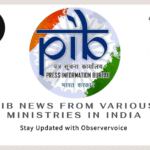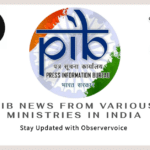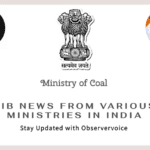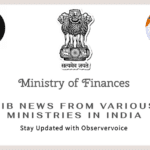Image Courtesy: Google Doodle
Maria Mitchell (1 August 1818 – 28 June 1889) was an American astronomer, librarian, naturalist, and educator.
Early Life And Education
Maria Mitchell, the first professional female astronomer in the United States, was born on August 1, 1818, in Nantucket, Massachusetts. Raised in a Quaker family, her parents, William and Lydia Mitchell, valued education and encouraged her intellectual pursuits. Her father, an amateur astronomer, was particularly influential in her early education, teaching her how to use a telescope and fostering her interest in astronomy. Maria attended local schools, including one conducted by her father, and later worked as a librarian at the Nantucket Atheneum, where she continued her self-education in science and mathematics. Her early life was marked by a unique blend of formal education, self-taught knowledge, and practical experience in astronomy, which laid the foundation for her groundbreaking career.
Career And Achievements
Maria Mitchell upbringing fostered a passion for education and astronomy, leading her to assist her father in astronomical observations and chronometer rating for the Nantucket whaling fleet. Mitchell’s dedication to astronomy culminated in her discovery of a new comet in 1847, later named “Miss Mitchell’s Comet,” which brought her international recognition and the King of Denmark’s Cometary Prize Medal in 1848. This discovery also led to her being the first woman elected to the American Academy of Arts and Sciences and the American Association for the Advancement of Science.
Mitchell’s career further flourished when she was appointed a computer for the American Ephemeris and Nautical Almanac and later, in 1865, when she accepted a professorship at Vassar College, becoming the first female professional astronomer in the United States. At Vassar, she was not only a faculty member but also the director of the observatory, where she influenced many students, including notable figures like Christine Ladd-Franklin and Ellen Swallow Richards. Her legacy continues through institutions named in her honor, such as the Maria Mitchell Association and the Maria Mitchell Observatory, which perpetuate her commitment to scientific education and discovery.
Notable Events And Milestones
Maria Mitchell discovery of a comet in 1847, later known as “Miss Mitchell’s Comet,” earned her the King of Denmark’s Cometary Prize Medal and catapulted her to international recognition as the first professional female astronomer in the United States. Mitchell’s contributions to science extended beyond her discovery; she was a trailblazer in the daily photography of sunspots and was the first to propose that they were whirling vertical cavities, not mere clouds. Her work at the Nautical Almanac Office, where she computed ephemerides, and her role as the first woman elected to the American Academy of Arts and Sciences and the American Association for the Advancement of Science, underscored her status as a leading scientific mind of her time.
Beyond her scientific endeavors, Mitchell’s legacy is deeply entwined with her advocacy for women’s education. As a professor of astronomy at Vassar College, she not only instructed but also inspired a generation of women scientists, including Christine Ladd-Franklin and Ellen Swallow Richards. Her teaching philosophy emphasized hands-on learning and critical thinking, empowering her students to pursue careers in science at a time when such paths were largely inaccessible to women. Mitchell’s impact on society and culture was profound. She stood as a symbol of progress and possibility, challenging the norms of her era and paving the way for future generations of women in science. Her name lives on through the Maria Mitchell Association, the Maria Mitchell Observatory, and the Maria Mitchell Aquarium, institutions that continue to inspire curiosity and foster scientific inquiry.
In reflecting on Maria Mitchell’s enduring influence, it is clear that her contributions transcended the realm of astronomy. She was a visionary who recognized the importance of education, equality, and scientific exploration. Her life’s work not only advanced our understanding of the cosmos but also reshaped societal views on women’s capabilities and roles in the scientific community. Maria Mitchell passed away on June 28, 1889, in Lynn, Massachusetts, at the age of 70.
Awards And Honors
- Discovered a new comet in October 1847, later known as “Miss Mitchell’s Comet.”
- First woman elected to the American Academy of Arts and Sciences in 1848.
- Appointed a computer for the American Ephemeris and Nautical Almanac in 1849.
- Elected to the American Association for the Advancement of Science in 1850.
- Received a gold medal from the King of Denmark for her comet discovery.
- Elected a member of the American Philosophical Society.
- Honorary degrees from Columbia University, Hanover College, and Rutgers Female College.
- Inducted into the US National Women’s Hall of Fame and the Hall of Fame for Great Americans posthumously.
- On 1 August 2013, Google celebrated Maria Mitchell’s 195th Birthday with a doodle.
Additional Resources
Books:
- “The Astronomer Who Questioned Everything: The Story of Maria Mitchell” by Laura Alary and Ellen Rooney, a picture book biography perfect for STEM enthusiasts.
- “What Miss Mitchell Saw” by Hayley Barrett, a beautifully illustrated picture book that tells the story of Maria Mitchell’s discovery of a comet.
- For more titles, readers can explore the collection of books related to Maria Mitchell on Goodreads.
Documentaries:
- A short documentary titled “Maria Mitchell (1818-1889) – astronomer and educator” available on YouTube provides insights into her life and work.
- “Maria Mitchell: America’s First Celebrity Scientist” by Big Think, also available on YouTube, discusses her impact on science and society.
- For a comprehensive view, the Maria Mitchell Association offers resources and historical context about her life.
Museums:
- The Maria Mitchell Association in Nantucket, Massachusetts, includes her historic home, a science library, an observatory, and a museum dedicated to her legacy.
- The Hinchman House Natural Science Museum is part of the Maria Mitchell Association and offers exhibits on the natural history of Nantucket, including Maria Mitchell’s contributions.
These resources provide a variety of ways to learn about Maria Mitchell’s life, her contributions to astronomy, and her role as a pioneer for women in science.
Observer Voice is the one stop site for National, International news, Editor’s Choice, Art/culture contents, Quotes and much more. We also cover historical contents. Historical contents includes World History, Indian History, and what happened today. The website also covers Entertainment across the India and World.
Follow Us on Twitter, Instagram, Facebook, & LinkedIn

